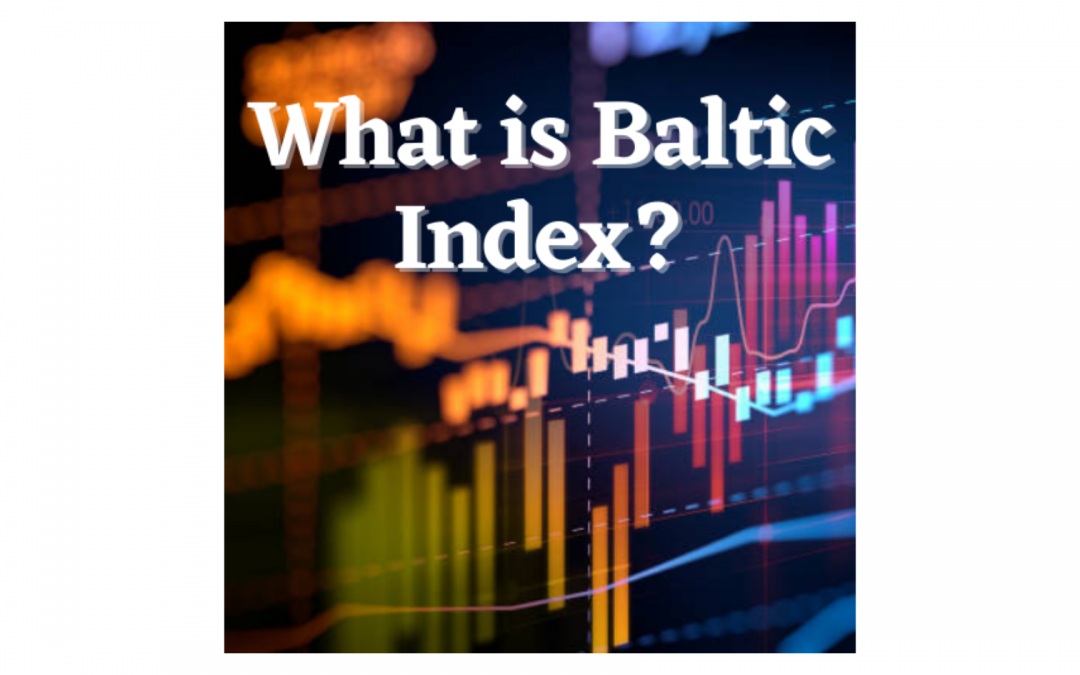Baltic index hits fresh multi-year lows on Capesize dip
Baltic index hits fresh 2-1/2-year low as larger vessel rates slip
Baltic index down for fifth day on lower vessel rates
We read these headlines in the Daily Shipping news from seajob.net. This got us thinking about what exactly Baltic Index is. Well, for an economics graduate, this would be easy. In simple words, Baltic Index or Baltic Dry Index (BDI) is a measurement used in economics to track international demand for dry raw materials and its cost to transport them by shipping vessel. It gives a clear idea about the supply and demand of several raw materials being shipped.
The Baltic Index’s value is generated by the demand for raw materials and its supply through ships available to transport them. It covers 23 shipping routes based on a time charter basis and investors refer to the index to forecast and predict the future economic activity and its changes on a global scale.
Its history dates to 1744, when businessmen and shippers involved in trade and shipping in the Baltic Sea area started meeting regularly at the Virginia and Baltick Coffeehouse in London to exchange news, trade securities, and do shipping deals. The emerging industrial revolution in the 19th Century, gave rise to global commerce and the Baltic Sea area became one of the main routes of Shipping trade commerce. This formalized the organization and the Baltic club of businessmen and shippers. The organization officially in its early days, started setting rules and compiling pricing information on various commodities for trading and transacting a wide range of raw materials. Towards the end of the 19th Century, it gained momentum and became an international organization when the Baltic and London Shipping Exchange merged together and formed the Baltic Mercantile & Shipping Exchange Ltd in 1900. However, during the Great Depression Years from 1929 to 1939, when the stock market crashed in Oct 1929, setting the whole inventory market into panic, the Baltic Exchange moved away from trading commodities to focus more on shipping and ship chartering, serving as intermediaries between ship owners and merchants around the globe. In 1985, the Baltic Exchange started compiling the Baltic Freight Index for dry bulk cargo on defined ocean routes. It polled shipbrokers daily on the cost to ship cargo and compiled them into an index. In 1999, the BFI evolved into today’s Baltic Dry Index. The Baltic Exchange also developed freight derivatives, in particular the Freight Forward Agreement (FFA) that allows shippers and merchants to hedge and lock in the cost of shipping commodities. Today the Baltic Exchange is a key player in the global freight shipping market, compiling information about the industry. In addition to dry bulk cargo, the Baltic Exchange is also active in a wide range of other types of cargo, including tankers, container ships, and even air freight.
In short, members of the Baltic Exchange contact various shipbrokers worldwide to assess the different prices they are charging for their services. After they receive the submission of the numbers, the members analyze the information and thereafter produce the index amount. The Baltic Index is important because its value directly results from the supply and demand for raw materials and the cost to ship them. When the index changes in value, investors can look at it as a reflection of changes in economic activity and, in particular, infrastructure projects. As the value of the index increases, it suggests that more materials are in demand and vice versa.
The Baltic Index comprises three different vessel types i.e. Baltic Capesize Index (40%), Baltic Panamax Index (30%), Baltic Supramax Index (30%). It is basically used for bigger Vessels like the Panamax holding 50,000-80,000 tonnage, Capesize holding 1,00,000-1,30,000 tonnage. The Index is more relevant for bigger ships.
Furthermore, since the index is updated in real-time daily, the information is accurate and applicable to real-world situations. But, it is critical for investors to understand that the Baltic Dry Index is not a perfect representation of global demand. With that being said, however, it can still be a helpful indicator to predict international economic activity.
Therefore, the Baltic Index is a powerful economic indicator that sheds light on the supply and demand of various goods.
We hope you find this blog helpful.
Do share your insights in the comments.






